Skunks, raccoons, and other pests are attracted to the warmth and safety of sheds, decks, and attics. They will take advantage of aging structures and weaknesses to nest inside. In this case study, The Exterminators team performed a skunk and raccoon removal job in Hamilton, safely evicting the animals and preventing their return with a comprehensive exclusion of the property. Animals were living underneath the shed and within the attic of a semi-detached home.
Exterior Inspection
No matter the situation, the technicians at The Exterminators always perform a thorough inspection of the property first. This gives our experts a proper understanding of the infestation, allowing them to provide the best service. Upon arrival, the technician in this case examined the roof for signs of animal damage and points of entry. The homeowners had reported some ongoing raccoon activity there and were concerned that they were living in the attic. They could hear the animals rustling and making noises there at night. Raccoons commonly break into attics by pushing up on the soffits, tearing the drip edge open, or breaking the vents right off.
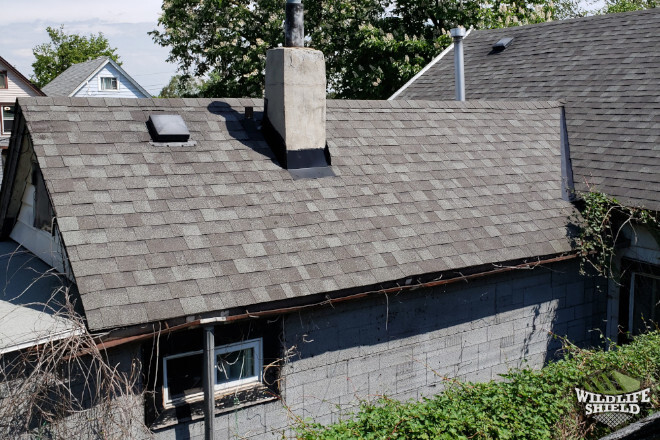
Here, the technician found a hole in a corner of the roof where the soffit reached the roof below. Raccoons had pushed into the soffit and torn through the wooden framing of the attic to get inside. As a semi-detached home, the property’s attic was connected to the neighbour’s next-door. The roof on the neighbour’s side showed signs of wear and tear, raising concern that raccoons and other pests could reach the attic from their side. While the attic itself would normally be inspected immediately, it could not be reached because the hatch was in a tenant’s bedroom. The Exterminators would need permission from the tenant to enter, so the interior would be examined later.
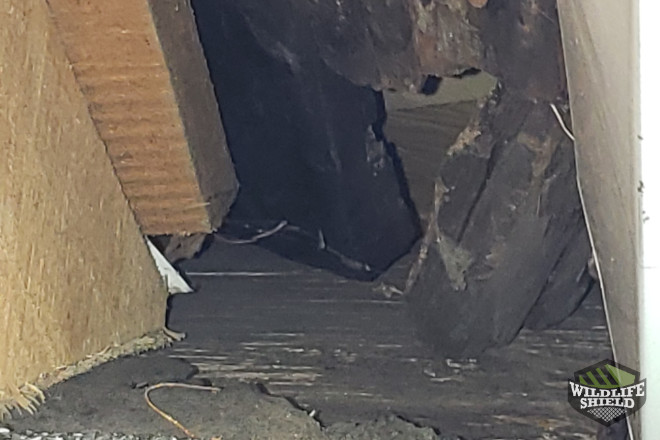
Given his findings, the technician recommended the installation of a one-way door to the hole in the roof to let the raccoons out. The one-way door consists of a plastic flap that swings outward, allowing raccoons to leave the attic but blocking their return. This does not harm the animals in the process. Once out, usually within a few days, the raccoons would simply have to find another place to live. The technician would then return to the property to remove the door and replace it with some impenetrable mesh.
Interior Inspection
A few days later, before installing a one-way door, another member of The Exterminators team performed an interior inspection of the attic. This would give the technicians an idea of what was going on inside. In many raccoon cases, there are cubs in the den, so it is always a good idea to check. Because the attic in this case was connected to the neighbour’s next door, this would also expose any holes on the interior between the attics that would need to be sealed.
Thankfully, there were no points of entry between attics. There were signs, however, of a raccoon living in the attic. The insulation was crushed, damaged, and littered with debris. The hole in the roof was also visible from the interior, proving that animals were moving in and out from this point. The one-way door could be installed to the hole to let the animal out.

Eviction, Exclusion, and Skunks
Following the exterior and interior inspections, the homeowners agreed to evict the raccoons using the one-way door method. A technician then returned to the property to install it to the entrance. This is done by screwing the door right into the roof. Within a few days, the animals living in the attic would have to leave to get food. Once out, they would not be able to get back in.
While visiting the property to install the one-way door, the technician on duty found evidence that a skunk was living under the shed. Skunks are excellent diggers that often find shelter under sheds and other structures in gardens and wooded areas. Once on the property, they may cause terrible odours and risk damaging the garden. To remove the skunk, the technician recommended installing a one-way door to the hole in the ground and excluding the shed by surrounding its base with a galvanized steel mesh.
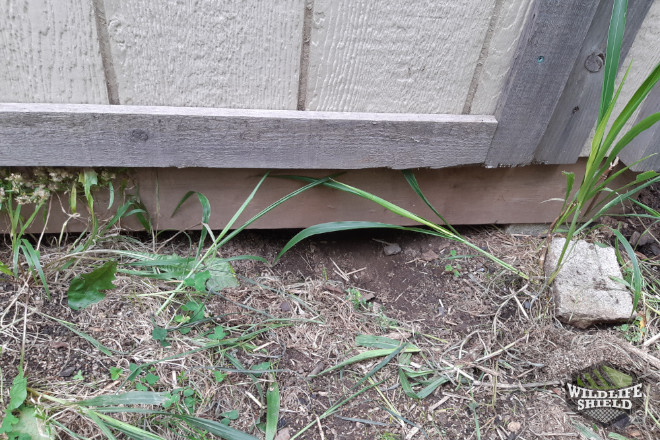
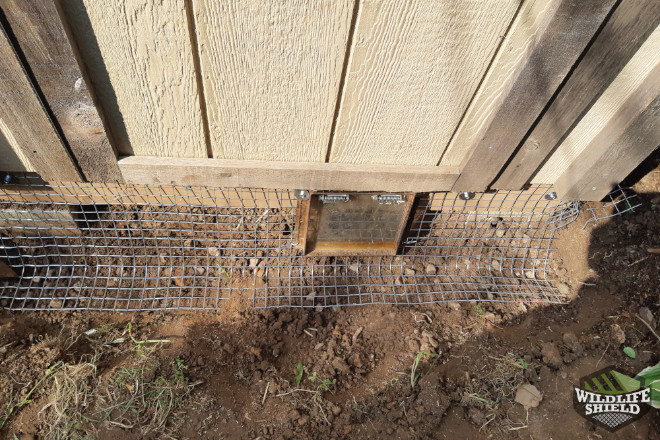
The owner of this North Hamilton property agreed to evict the skunk at the same time as the raccoon. By this time, it was early October, and the animals would have plenty of time to find shelter elsewhere before it got too cold. So, the technician dug a trench around the shed and screwed mesh into its sides. This would make it difficult for skunks, rats, or other pests to dig under the shed as galvanized steel is strong enough to resist rodent chewing and tearing. A one-way door was installed with the mesh to let the skunk out. A few weeks later, the technician would return to remove the doors and replace them with more mesh.
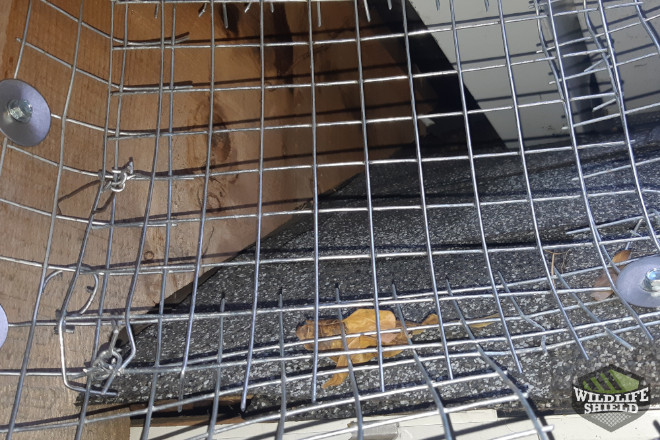
Conclusion
Both the raccoon and the skunk were gone within a few days. Finding the entry points, attaching one-way doors to them, and excluding the other accessible areas promptly forced the animals out of their dens. This is a humane and straightforward process. The professionals at The Exterminators know the signs of an infestation and have the tools for a safe and effective removal at their disposal.
This case shows how important it is to maintain your roof and how common pests are in suburban areas. Raccoons and skunks are adaptable creatures that have learned to live alongside us. They will take advantage of any weakness or opening on the property to get indoors where they can be safe. If you are concerned about the wildlife in your area and want your roof inspected, give The Exterminators a call. Our pest removal and proofing services come with extensive warranties.